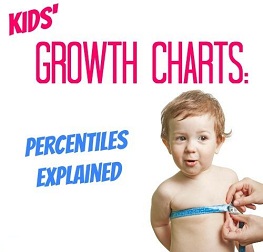- 9975035364
- [email protected]
Growth Surveillance and advice

Children’s growth is an important marker of their health and development. Poor growth inutero
and early childhood is associated with short and long term effects including increased
rate of childhood infection, and development of ‘life-style’ diseases including coronary heart
disease, high blood pressure and diabetes [1, 2]. Over-nutrition and obesity are also linked to
poorer health outcomes . Both infant body size during the early years of life and infant
growth velocity have been shown to be associated with risk of later overweight and obesity in
childhood and adulthood . Growth assessment is the single measurement that defines the
health and nutritional status of children because disturbances in health and nutrition almost
always affect growth . However growth charts are not a sole diagnostic tool but rather
contribute to forming an overall clinical impression for the child being measured .
Growth assessment involving the measuring of weight, length or height (and infants’ head
circumference) followed by accurate plotting on a growth chart is quick, non-invasive and
provides valuable information about the general health and well being of the child.
For parents growth assessment can be reassuring if their child is gaining weight steadily;
however monitoring too frequently or focusing on weight gain can lead to anxiety and
unnecessary referral to secondary services . Growth charts are frequently used to educate
parents about their children’s growth. However many parents have difficulty understanding the
data presented on a chart . Health professionals are encouraged to teach parents how to
interpret a growth chart and involve them in decisions on the management of altered growth
patterns
Factors affecting growth.
Genetics Parental size has a direct influence on a child’s growth potential and predicted adult height. A child with short stature may be of concern because of possible illness or poor nutrition, but for a short child with short parents they are possibly genetically small. Extreme shortness may be due to a combination of genetic and non-genetic factors and should be assessed by an endocrine specialist. Charts may be used to determine a child’s predicted height based on midparental height. A child whose adjusted stature is still less than expected should be investigated further . Three percent of all children will grow below the 3rd percentile on height for age charts and still be healthy. Genetic disorders and chromosomal abnormalities can also have the potential to alter children’s growth e.g. Trisomy 2, Prader-Willi syndrome and others.
Ethnicity Traditionally it was believed that different ethnic groups show different patterns of growth; on average African-Caribbean groups were believed to be taller and heavier, and Asian and Chinese groups shorter and lighter when compared with Caucasians . However the 2013 Child Growth 2 Multicentre Growth Reference Study (MGRS) has refuted this belief showing that variability in infant growth was greater within population groups than between the different country groups
Birthweight Birthweight is universally measured making it one of the most accessible and reliable indicators of not only the infants health but subsequent health risk in adulthood . In general, lower birthweight is associated with higher risk or morbidity . A baby’s weight at birth is strongly associated with mortality risk during the first year, with developmental problems in childhood and risk of diseases in adulthood, including cardiovascular disease and some cancers . At a population level, groups with lower mean birth weight often have higher infant mortality (e.g. infants of mothers who smoke or of mothers from lower socioeconomic background). Asthma, lower developmental outcomes and hypertension have all been reported to be more common among small birth weight infants .